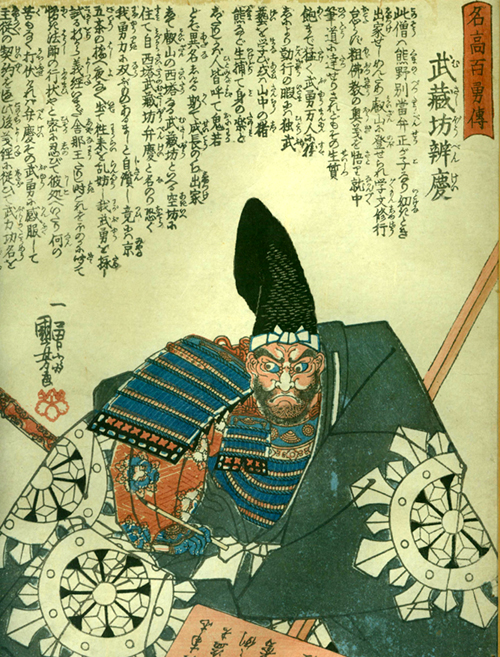房吉
輪宝鉄透鐔
Fusayoshi Rinbo Tsuba
Diameter: 10 cm x 9.8 cm
Thickness: 6 mm
This is a large and outstanding iron sukashi tuba by Fusayoshi. It is a zaimei example and signed "Fusayoshi Saku" on the omote seppa dai. Wakayama records two craftsmen that used this mei. The first one signed "Yamashiro ju Fusayoshi" and some of his works exist with a Keicho nengo (1596-1615) recorded. The second Fusayoshi listed used a two kanji mei and was active around mid-Edo times, circa 1700. This tsuba looks to be mid Edo work and undeniably Kyo (Yamashiro) in style. The detail and exacting skill of the sukashi executed in this tsuba is amazing. The iron had to be perfectly homogeneous to allow for such work and it must have taken months to make.
The Rinbo (wheel of the law) was a weapon in ancient India and came to be a symbol of the Buddhist faith. The circle symbolizes the completeness of the Dharma, the spokes represent the eight-fold path leading to enlightenment: faith, intention, speech, action, livelihood, endeavor, mindfulness, and meditation. It is drawn from an Indian symbol, but instead of representing Samsara, or endless rebirth, it symbolizes overcoming obstacles. In this case, the rinbo has 6 spokes.
This tsuba is accompanied by an NBTHK Hozon paper. It has a custom fitted kiri-bako and a charming cloth case. An exemplary iron sukashi tsuba with deep meaning and in excellent condition.
SOLD
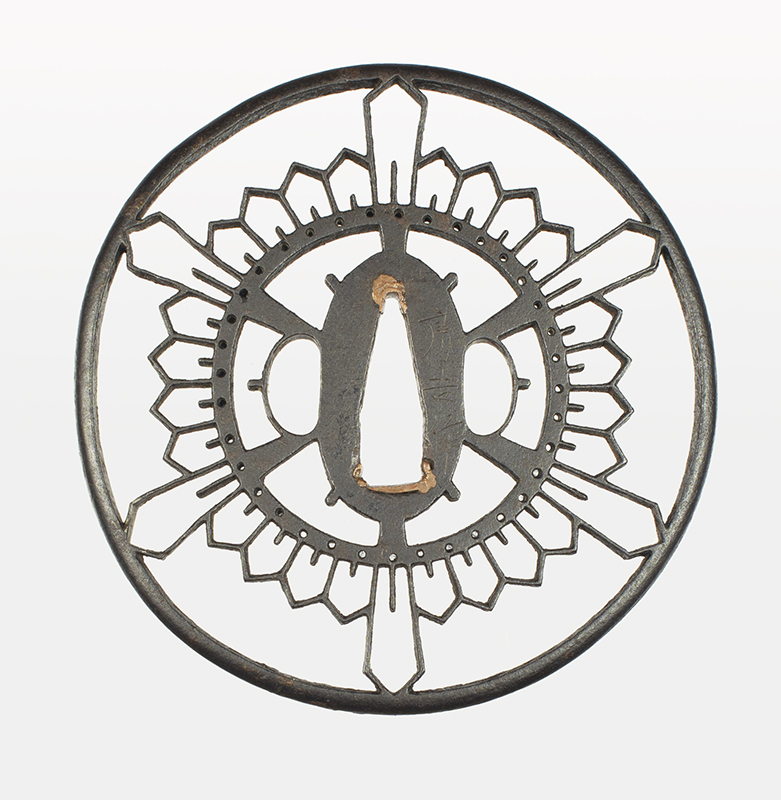
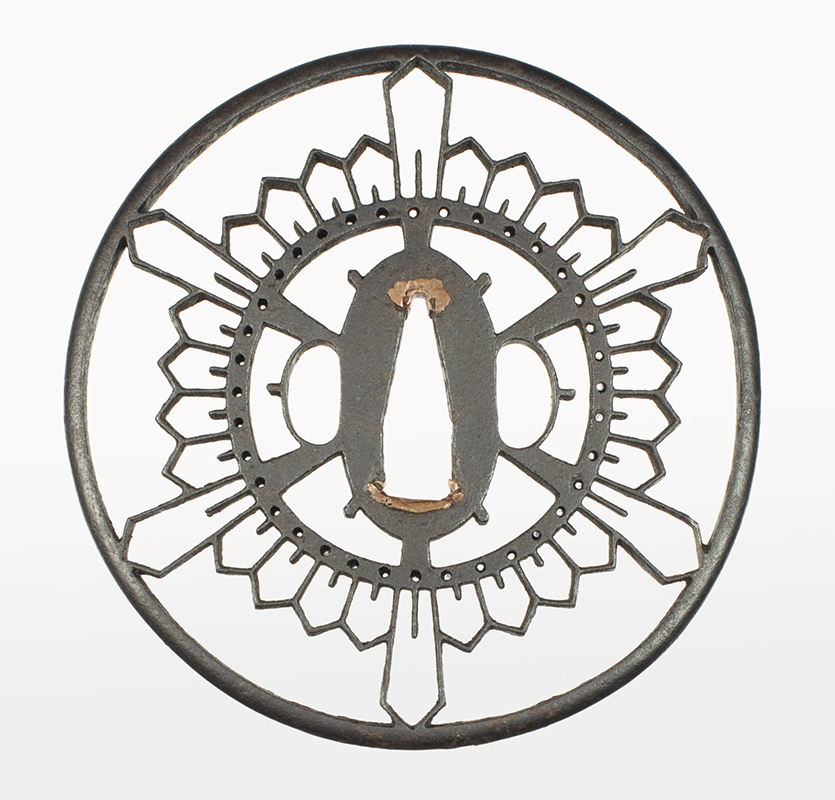
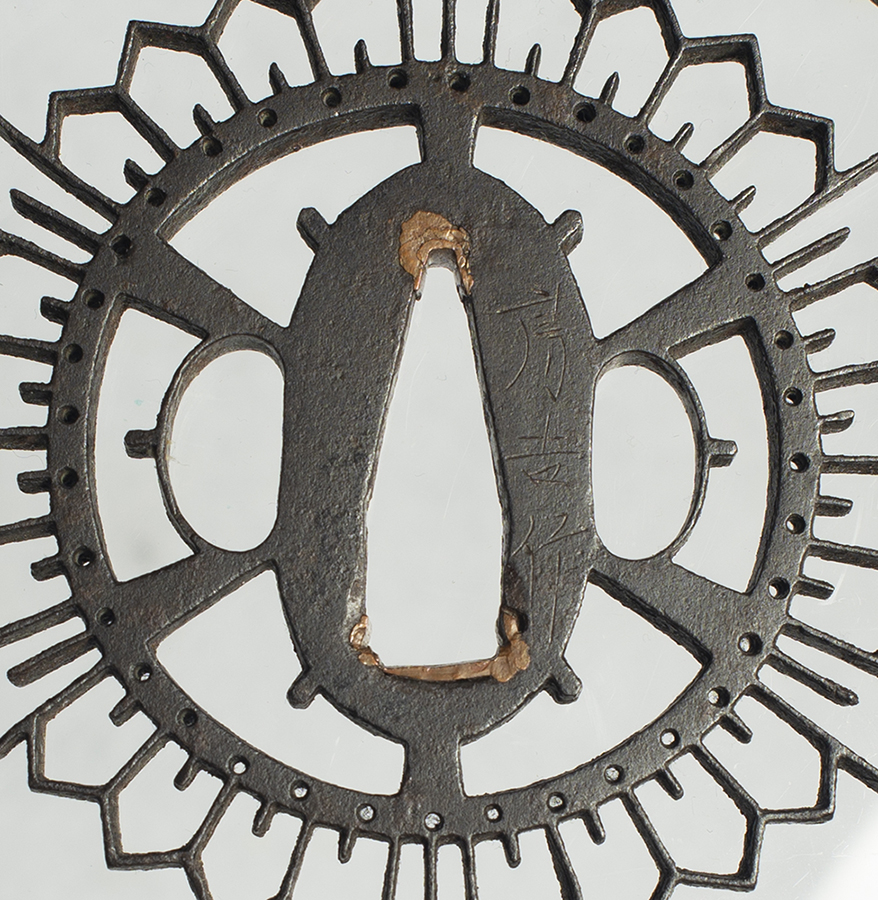
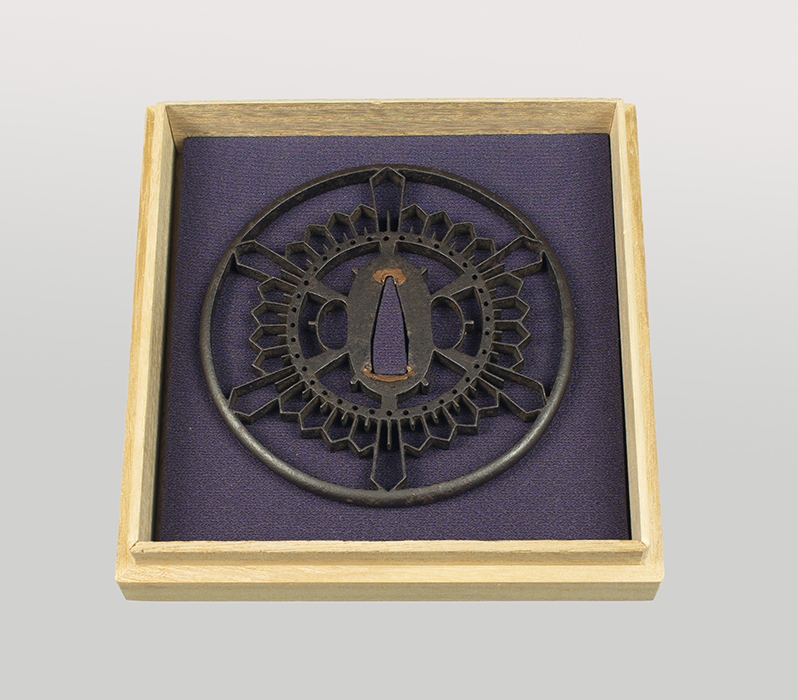
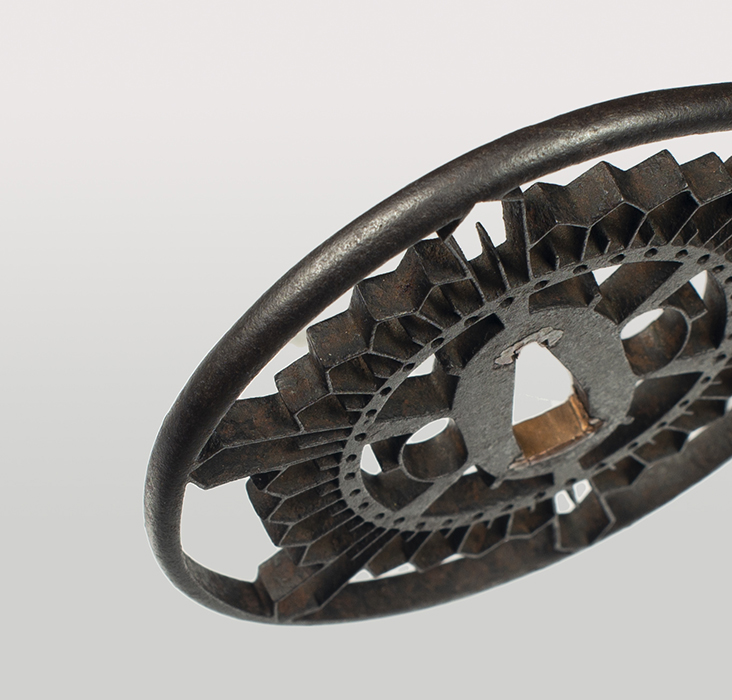
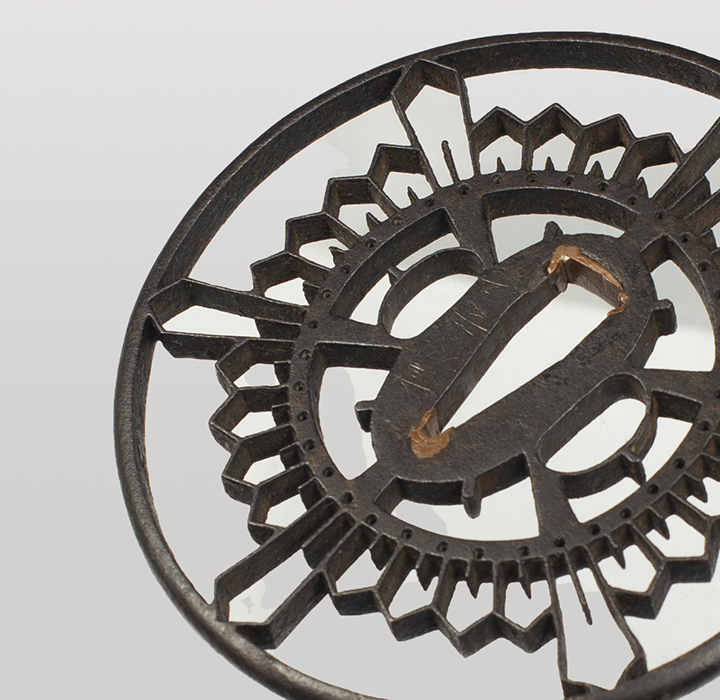
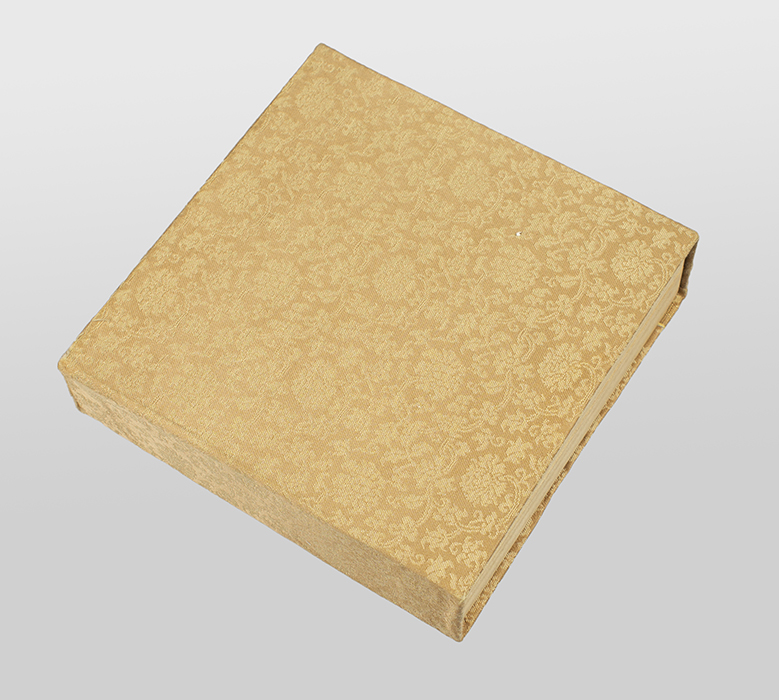
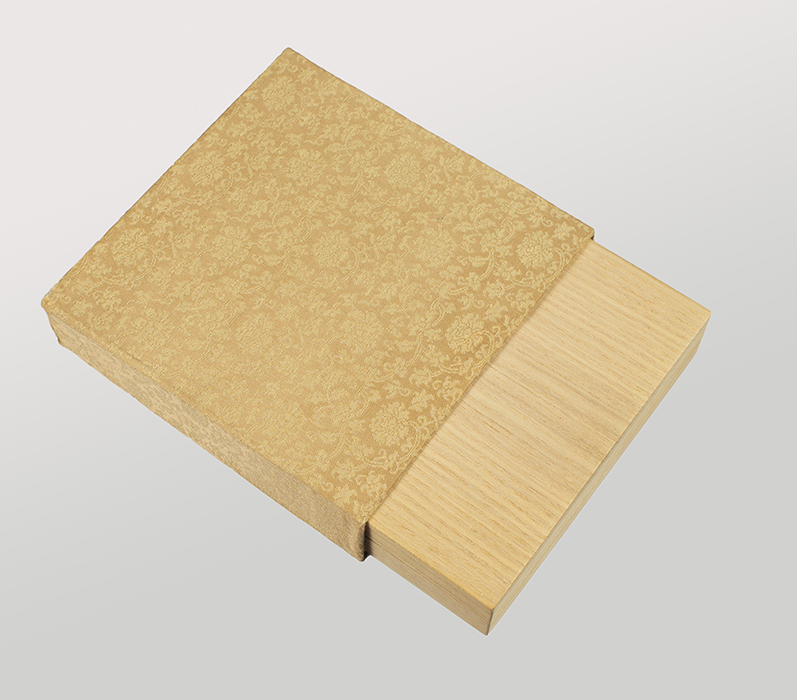
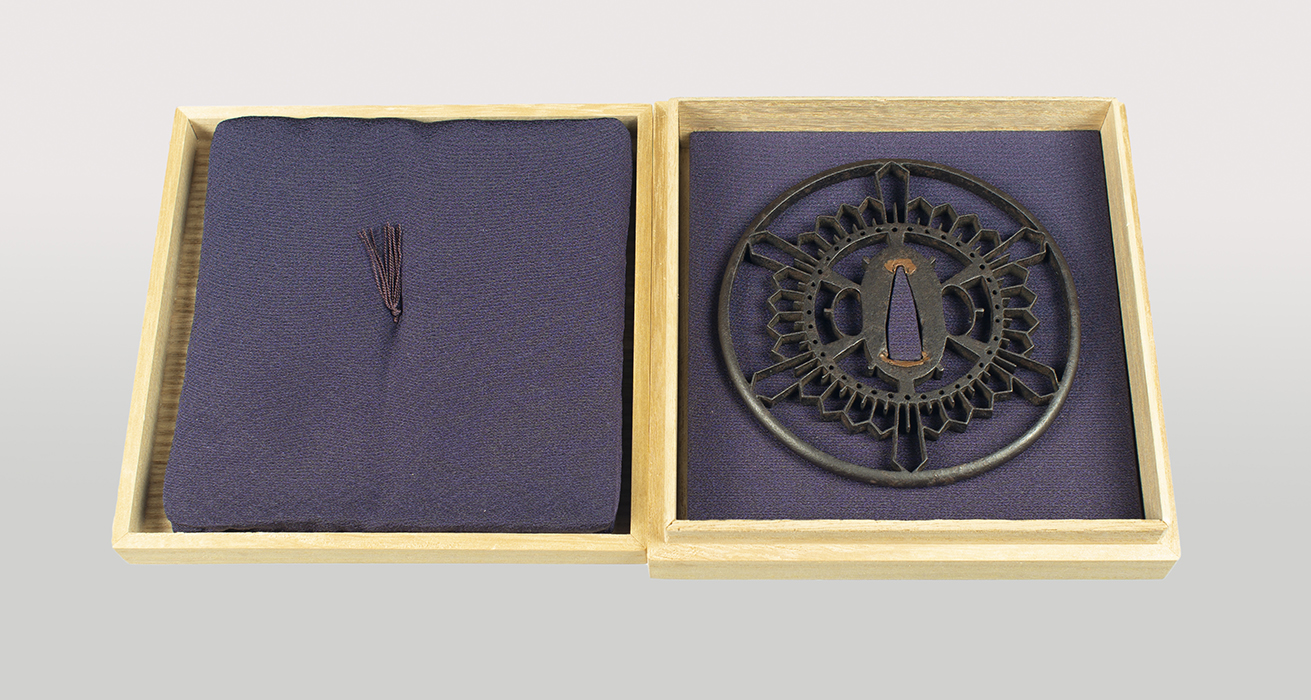
The photo below in shown to covey the size of this Fusayoshi tsuba. The tsuba on the right is an Ono school katana tsuba.
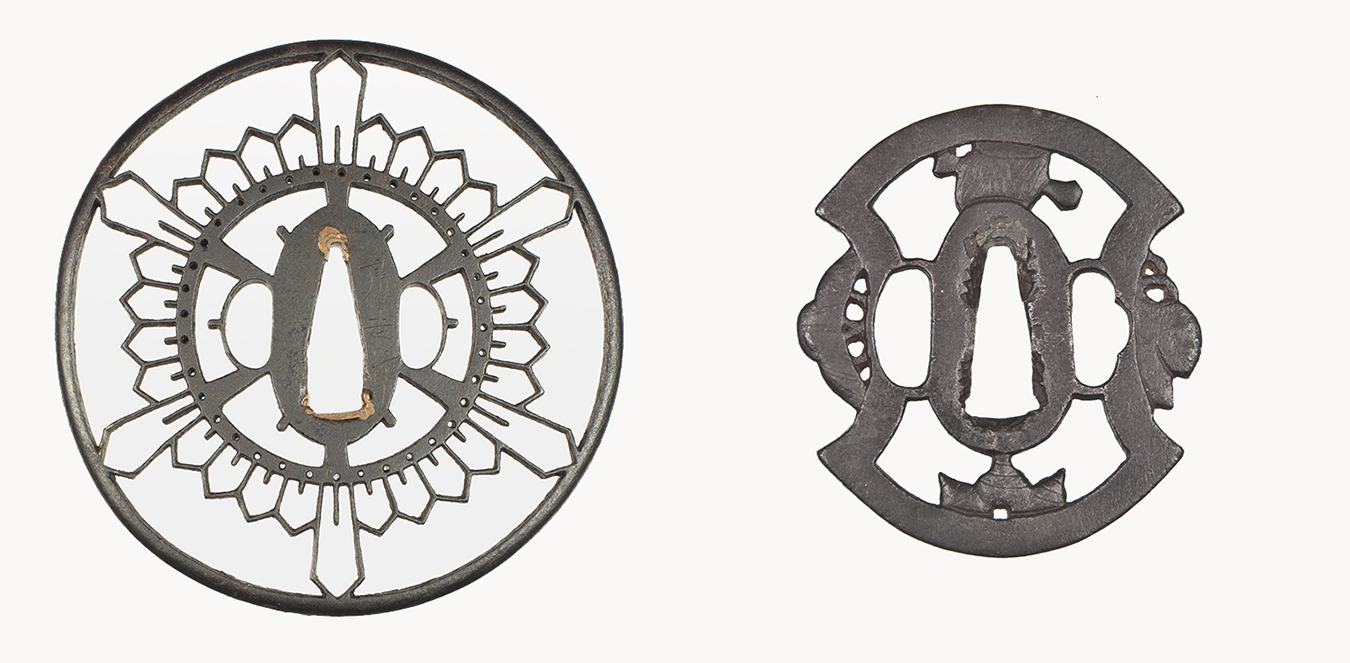
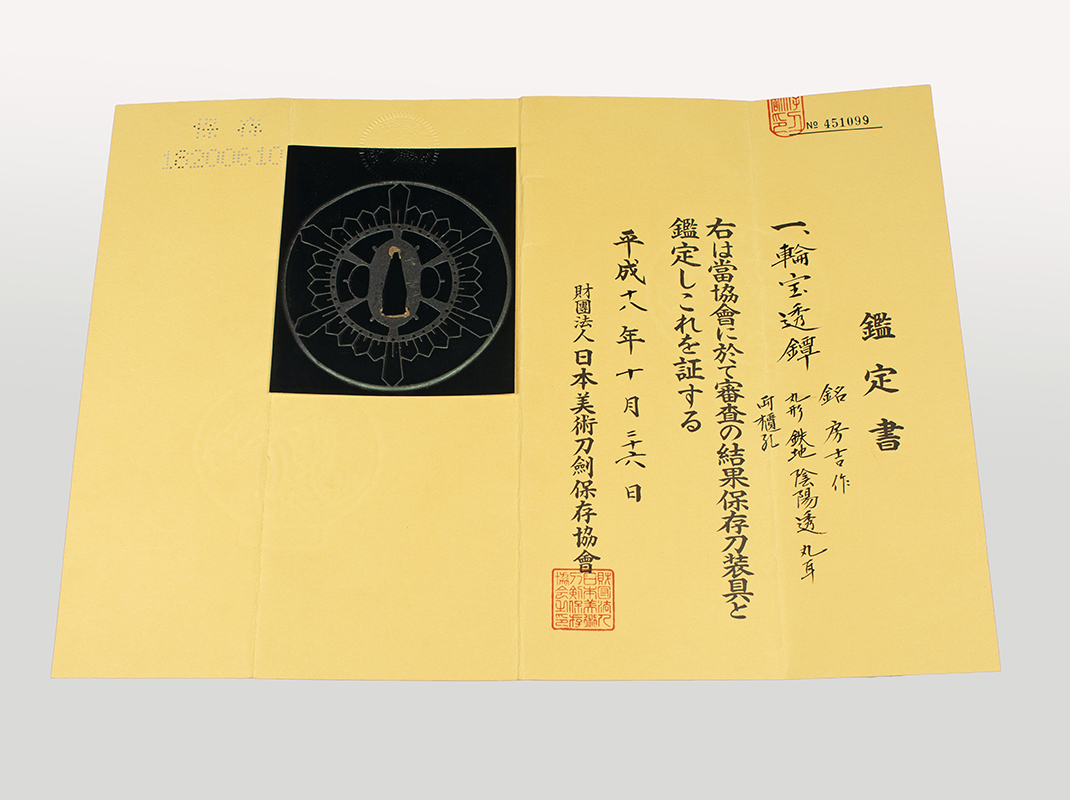
The Rinbo or "Wheel of the Law" is a theme often seen in Japanese history. Here is a wood block print by Kuniyoshi in which the Rinbo is featured on the overcoat of the subject figure. The title of the print series is "Meiko Byaku Yu Den" (stories of a hundred heroes of high renown) The series dates form 1845-1850. This print is of Saito Musashibo Benkei. He was a famous warrior monk of the 12th century. In this scene, he has just written an inscription dated Juyei 3 (1184) on a notice-board.
